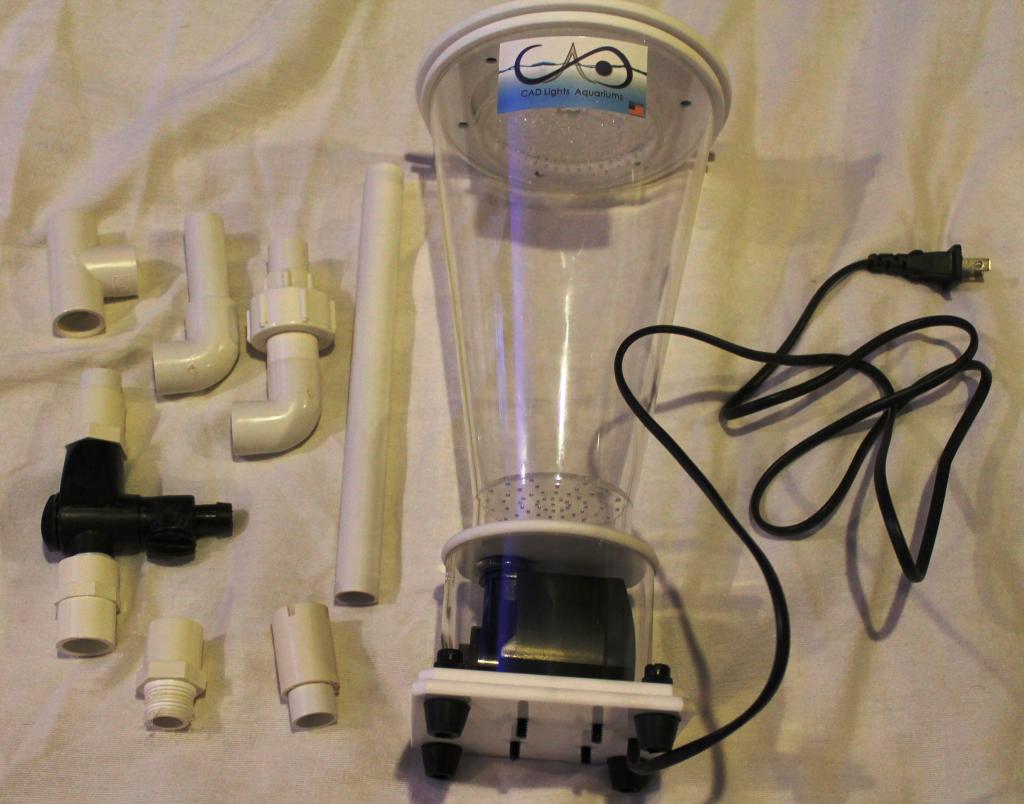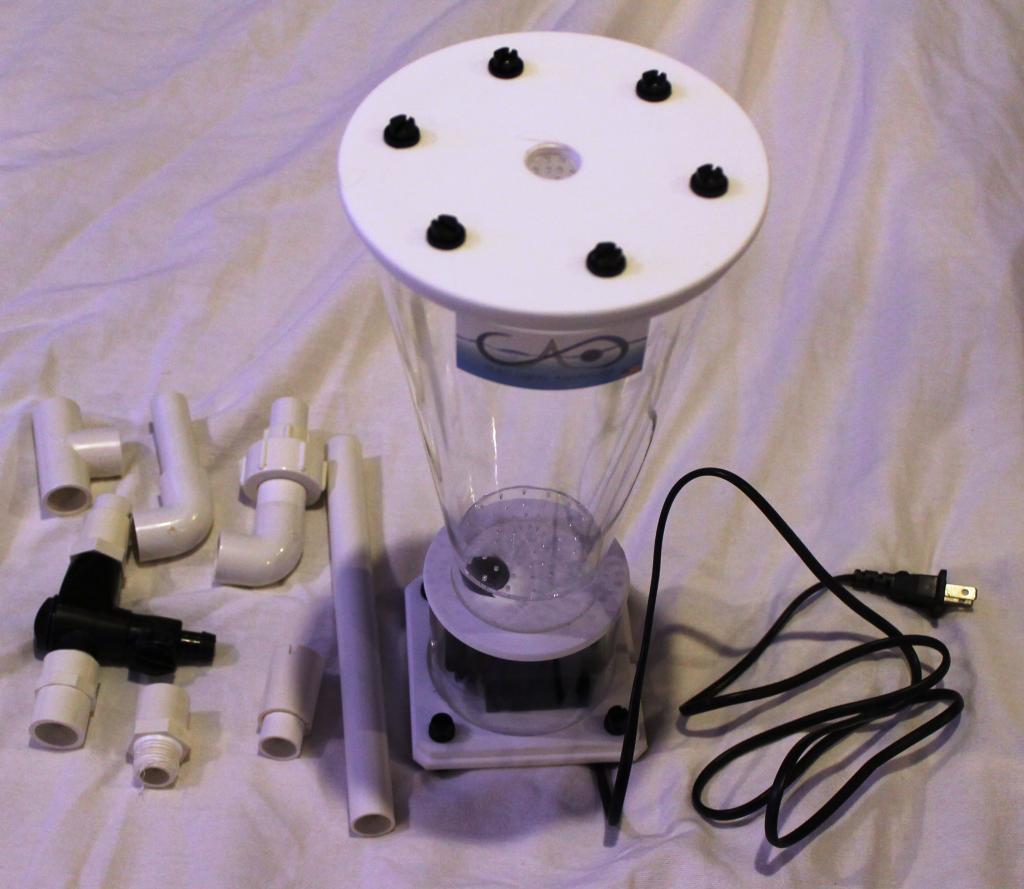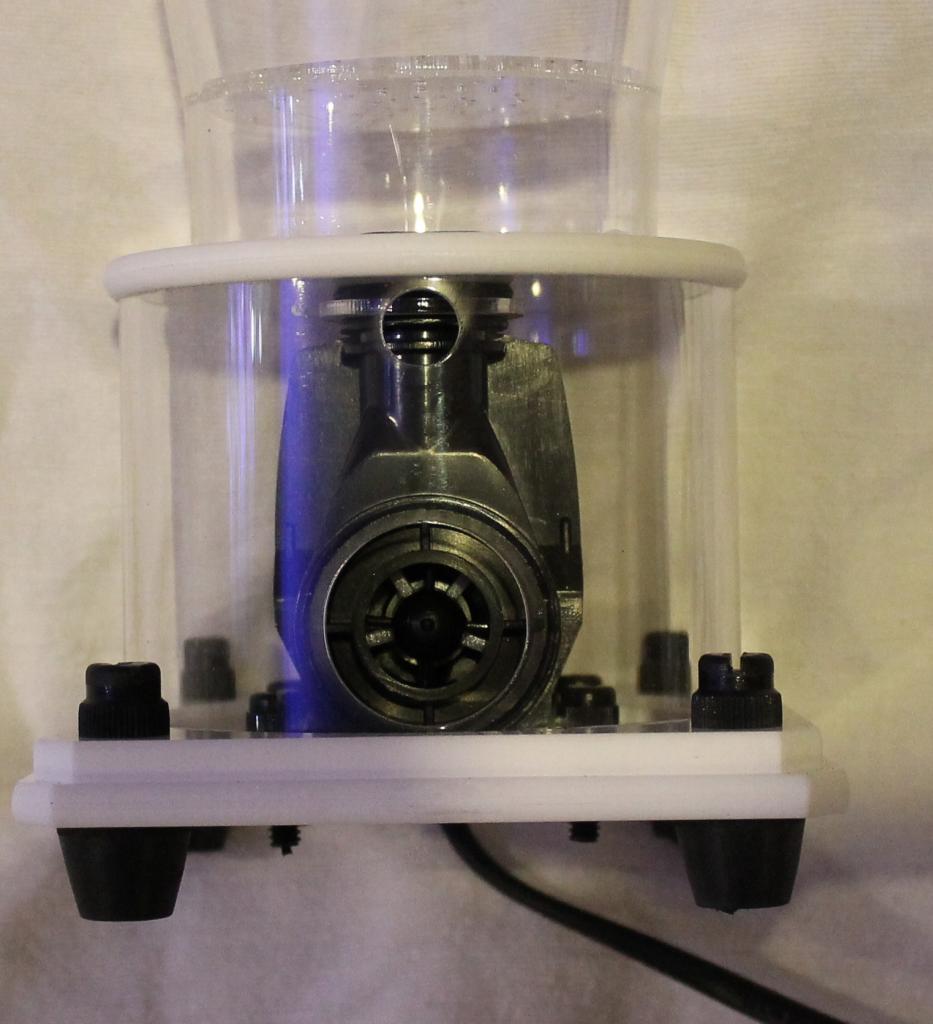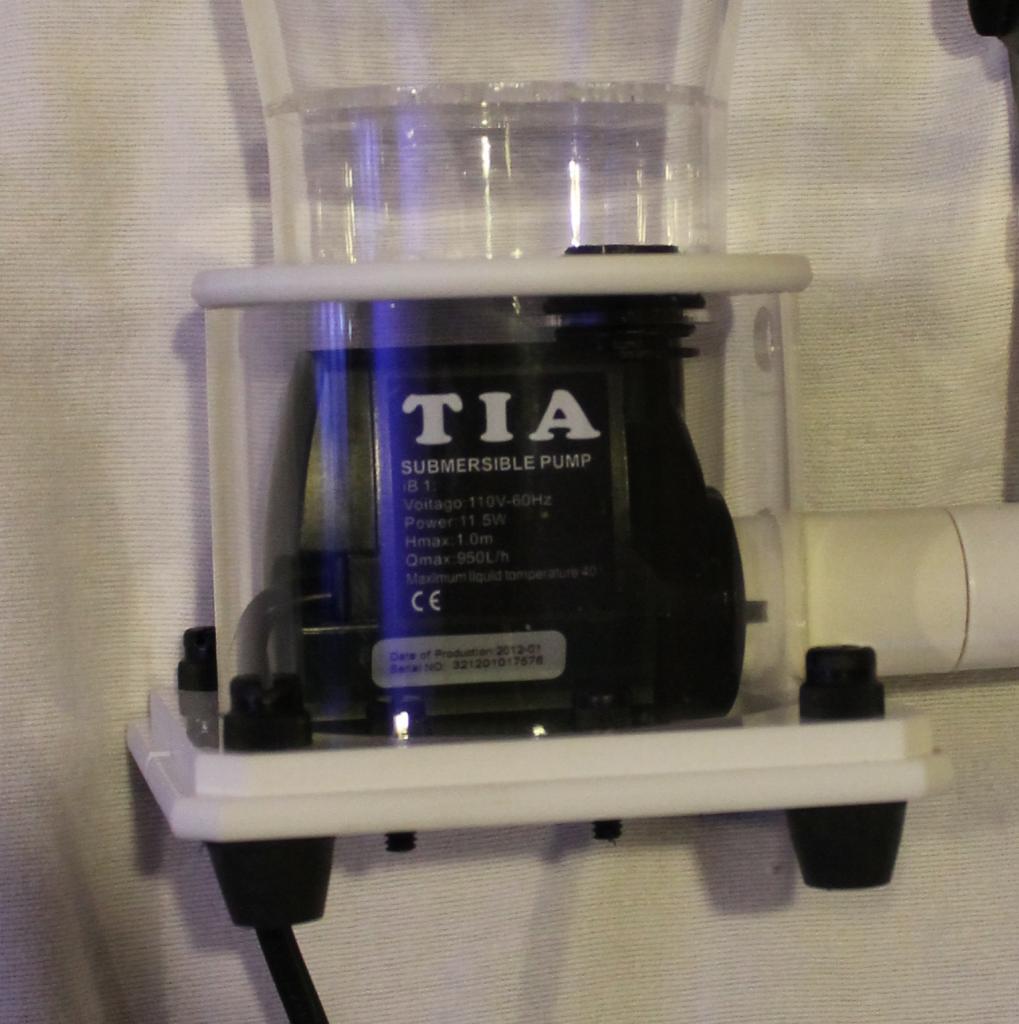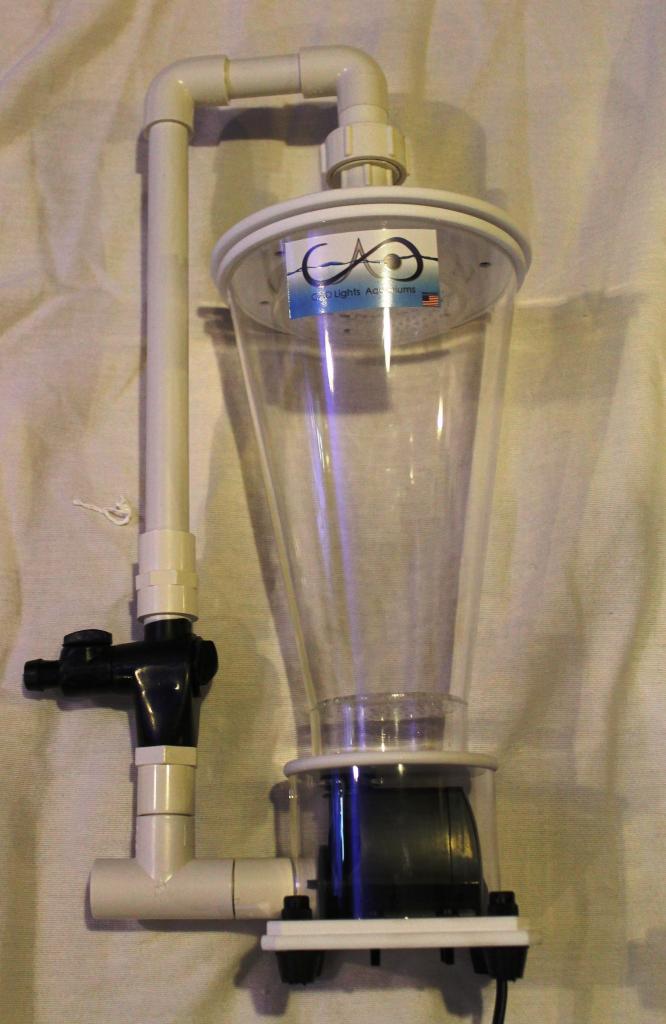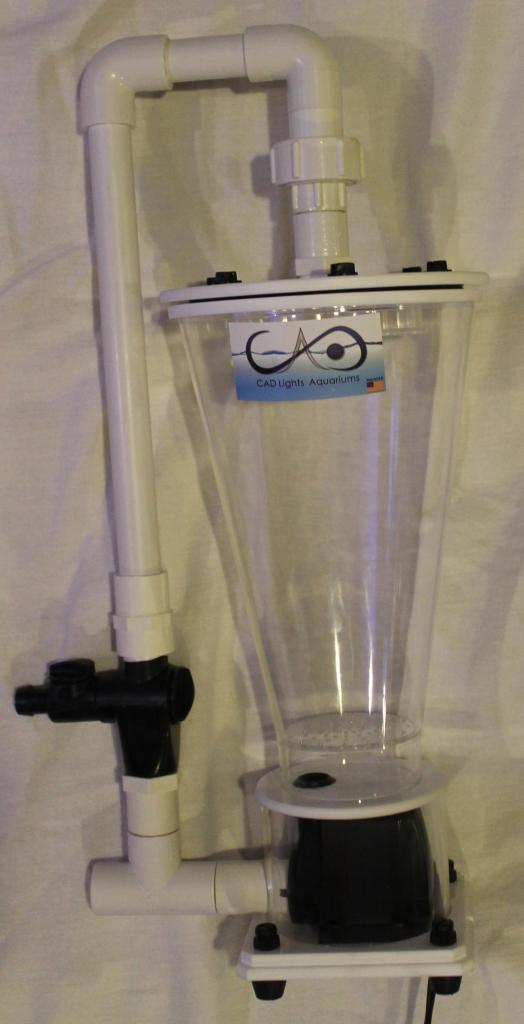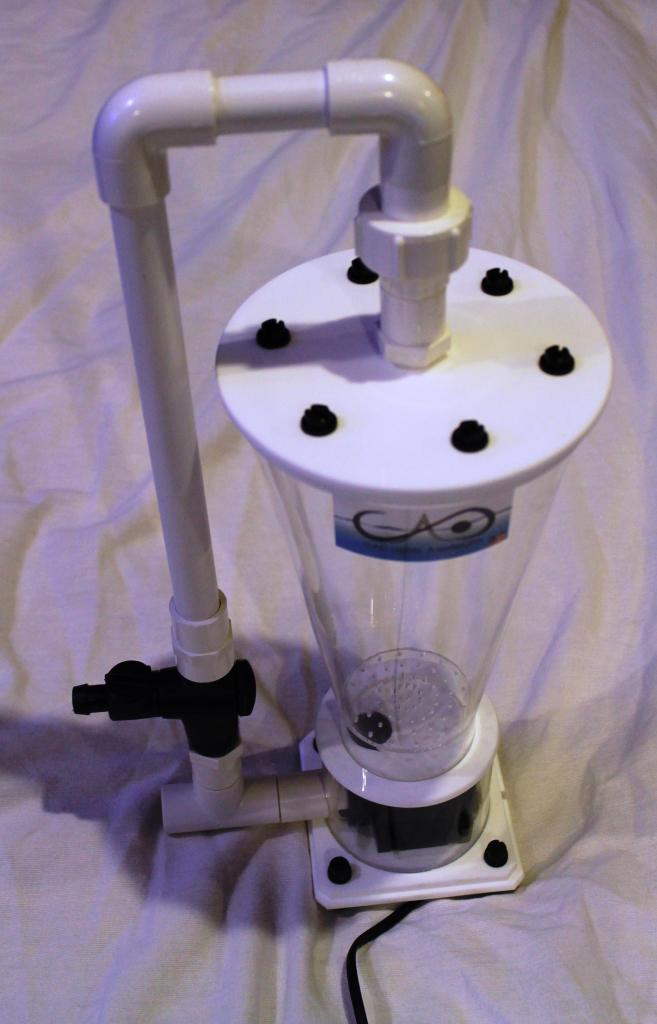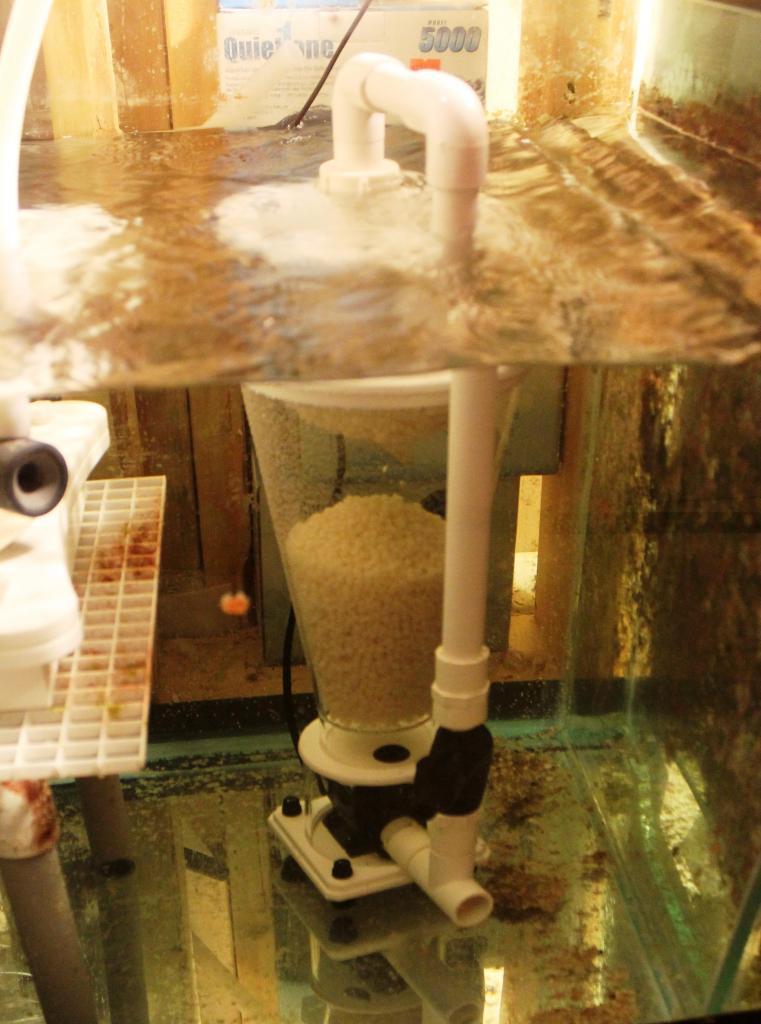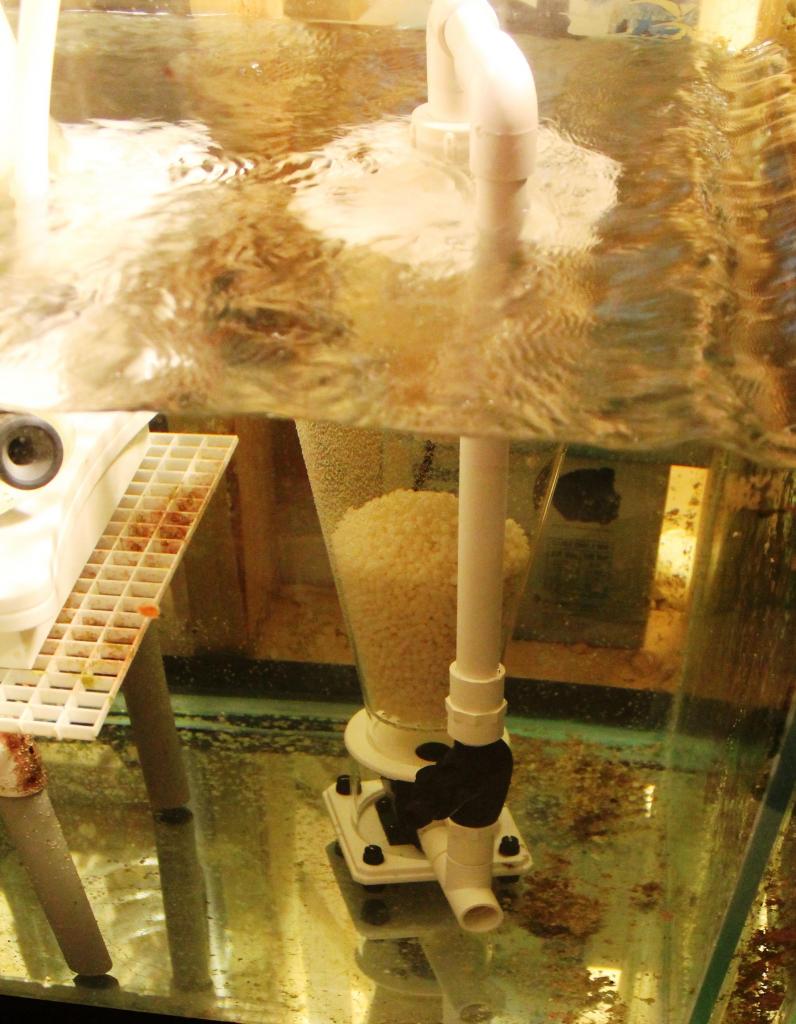Monthly Archives: October 2013
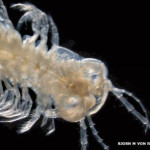
New venomous remipede species discovered, Speleonectes tulumensis
A new venomous species of remipede, Speleonectes tulumensis, has been found and described by science. The new species is the first venomous crustacean and have a venom similar to that found in rattlesnakes.
The new species of remipede seems to have a wide distribution and has been observed in underwater caves located in the Caribbean sea, around the Canary Islands, and off Western Australia. Further research might reveal that this is actually several very similar species.
The species is blind and found in dark caves.
The remipede use its venom to hunt and kill its prey. They mainly feed on other crustaceans. The venom kills the prey and liquifies the soft tissue allowing the remipede to consume it by sucking it out of its prey much like a spider do on land.
Dr Ronald Jenner, a zoologist at London’s Natural History Museum and a co author of the research paper introducing the remipede comments on the discovery by saying:
“The unique insights from this study really help improve our understanding of the evolution of animal venoms.
The spider-like feeding technique of the remipede is unique among crustaceans. This venom is clearly a great adaptation for these blind cave-dwellers that live in nutrient-poor underwater caves.” ..
The discovery was made of a team of scientists consisting of
- Björn M. von Reumont
- Alexander Blanke,
- Sandy Richter,
- Fernando Alvarez,
- Christoph Bleidorn,
- Ronald A. Jenner
and was presented in the research article:
The first venomous crustacean revealed by transcriptomics and functional morphology: remipede venom glands express a unique toxin cocktail dominated by enzymes and a neurotoxin
Mol Biol Evol (2013) doi: 10.1093/molbev/mst199
If you want to know more you can find the research paper in the Oxford journal of Molecular Biology and Evolution.
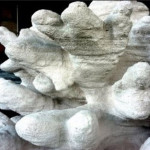
3D printing set to revolutionize artificial reefs
Making reef structures from cement has long been used as a technique to try to restore or create new reefs. The cement reefs do work but are associated with several different problems. One of them is that cement isn’t pH neutral and that coral larvae therefore do not settle on them in the amounts that is desired. Another method used to create fake reef is to use metal structures with a low electric current running through them. This quickly calcifies the tubes and promote coral growth. This method can however be expensive and requires access to electricity. This can be hard to provide in areas where solar cells are likely to be stolen by local fishermen..
SOI, 3D program specialist James Gardiner and Reef Arabia is now pioneering a new method of creating artificial reefs that might turn out to be a better alternative. Using a 3D printer to print reefs. They have developed a 3d printer than can print out reefs in a sand stone material. They have allready made and submersed two reefs. There are many benefits with this process says the forum group.
- The sand stone is pH neutral.
- It is possible to print any form with ease. This allows for more vertical surfaces where coral larvae like to attach themselves.
- A lot more complex designs are possible. 3D printing can easily create caves, crevices and other complex forms that would not be possible to do in cement.
- It is easy to use different designs which allows to create a lot more complex reefs (using different designed pieces). A more complex reef will offer suitable living space for more species.
- Sand stone has a smaller eco footprint than concrete as a lot less co2 is released in process.
- 3D printing can allow for more rapid production of artificial reef. At this point it takes 1 day to print one 5m reef unit and 4 of those can be printed simultaneous. A complex reef structure take about 1 week to design in the computer
It is still not certain that this technique will prove to be quicker and more cost efficient than currently used methods of creating reefs but Reef Arabia remain optimistic and it seems likely that prices will keep going down as 3D printing evolves. Even if ends up being a slightly more expensive method it might still be worth using since it allows for more complex and more natural artificial reefs.
Two Little Fishies 150 PhosBan Reactor Product Review
This is among the more popular fluidized reactors in use today due to its smaller size, affordable pricing, and flexibility of use. The below information was taken directly from the manufacture’s website
http://www.twolittlefishies.com/documents/1202405781.pdf
PhosBan Reactor 150™
The PhosBan Reactor 150 is designed with the upflow principle to achieve the most efficient use of PhosBan® or other chemical filter media. By pushing water from the bottom upward through a dispersion plate, it forces an even distribution of water through the media, and prevents channeling. It can be mounted hanging on the back of the aquarium or below the aquarium. Hose barb connections are for 1/2 inch i.d. tubing. Includes 1/2 inch barbed ball valve for flow control, and hose clamps. Use with any pump having a capacity between 100 and 250 gph, but regulate the flow rate to the recommended 20 to 30 gallons per hour with the included ball valve.
I have been using one for a few months now and have found it to be very good value for the money.I am currently using mine for biopellets on a sumped 120 gallon FOWLR aquarium. I have friends and fellow hobbyists who swear by this reactor and have been using it for a few years with phosphate removing media.I really like using this reactor in a sump due to the small footprint it takes up and the fact I will not have to worry about it leaking when used in a sump. The below is a list of pros and cons that I have found using this reactor.
Pros:
-Small size can be used in all most any type of sumped set-up with minimal room lost.
-Can easily fit under aquarium stand if not used in a sump
-Can be used in a hang on back style set-up
-Comes with a built in ball valve
-Very reasonably priced
Cons:
-The supplied connectors often leak a very small amount.If used outside a sump or aquarium, you will need to add better clamps to connect the fittings and hose together in order to prevent any leaks
-You will still need to purchase a pump to use it in some configurations.
-It is not convenient to remove and take apart for routine cleaning or replacing media.
-Some types of media can clump up or just not move around the outside edges along the bottom of the reactor.However, this is a common situation to find in all reactors with a similar design.
One quick tip on using this in a sump, if you keep the portion of the reactor with the media in it below the water line in the sump, you will need lover flow rates through the media and the reactor will work better. I took a picture and inserted it below to help explain what I am talking about.
Overall I am happy with the performance of this reactor and would recommend it to anyone who has a set-up with limited space for a reactor.
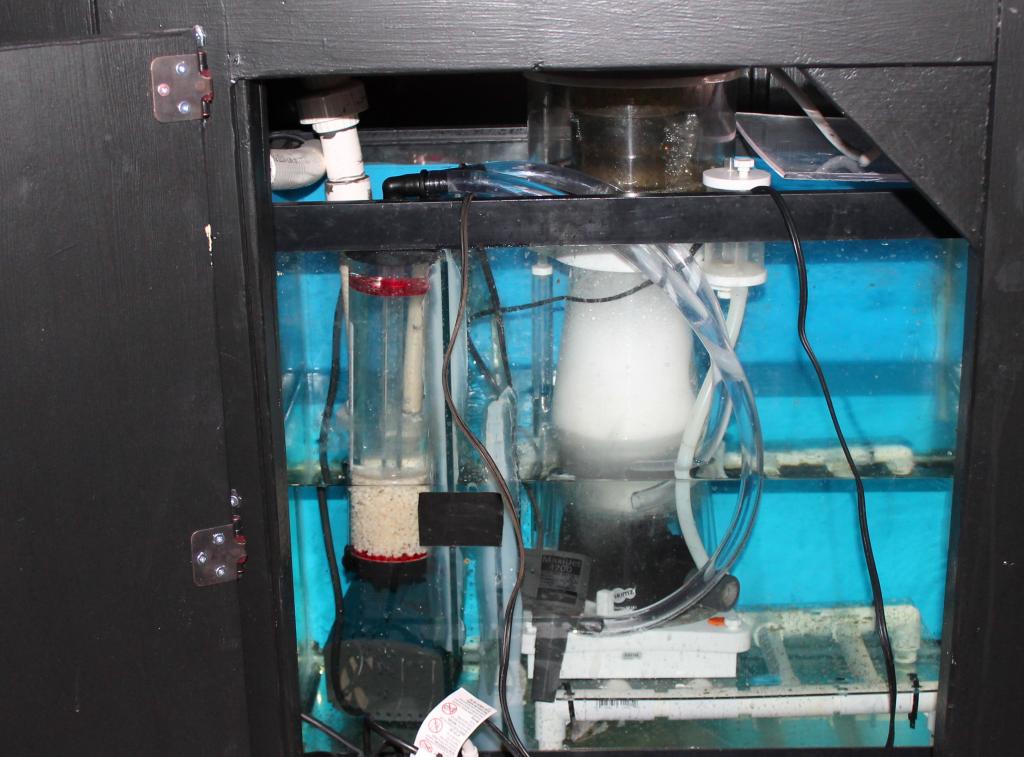

Tip of the Week # 4 – Salinity Levels
Your salinity level is among one of the more important parameters in a marine aquarium. Maintaining a proper salinity level will help you establish a proper pH as well as making your alkalinity and calcium levels a lot easier to maintain stable.
So what is the proper salinity level ? Many people have many different opinions about this ranging from 1.020 to 1.029 and they will also have a thought process in support of their options mostly around the type of setup they have. As the more popular fish and corals that we keep in the hobby come from in or near the ocean’s coral reefs with a salinity of around 1.026, I prefer to keep the salinity levels my FOWLR and Reef aquariums at the same level as these areas of the ocean, 1.026 (35ppt). However, there are some exceptions to that. The Red Sea for example will have a salinity level of around 1.028 to 1.030 depending on the exact location making it better to have a slightly higher salinity level if keeping fish or corals from the Red Sea.
You really do need to understand the water parameters in the area of the ocean that your fish and corals come from before you develop your own approach to maintaining your salinity.
The below link is to a very handy article that contains instruction for very different types of marine test kits
http://successfulreefkeeping.com/resource/aquarium-test-kit-instructions/
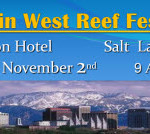
Dont miss Mountain West Reef Fest in Utah
If you are a reef keeper and will be in the Salt Lake Cuty area on November 2 we recommend that you swing by the red lion hotel and the Mountain view reef fest that will take place there between 9 a.m. To 5 p.m.. There is a USD 10 entry fee and the Wasatch Aquarium society has negotiated a special rate for all reef fest attendees that want to stay in the hotel. Just use the code MOUN1102 when you book your hotel to get the special rate.
Mountain West Reef Fest will feature a good group of speakers, raffles, DIY food workshop, photography workshop and vendors. A total of 12 coral vendors ate expected to sell their goods at the Mountain West Reef Fest
Amount the speakers for Mountain West Reef Fest we find Kevin Kohen, Scott Michael and Adam Blundell You can find more info on the Mountain West Reef Fest website.
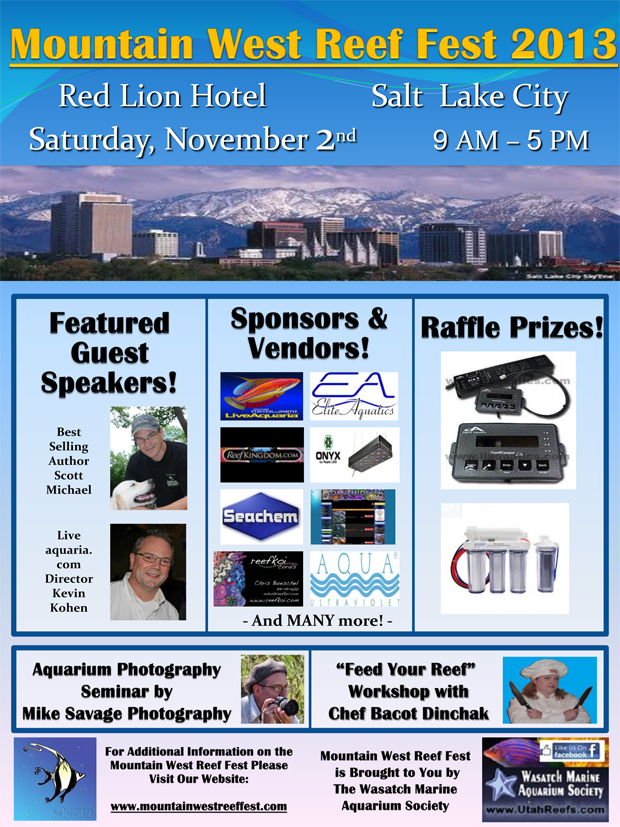
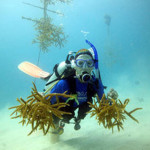
Join your local garden club, help ”plant” corals
Working with corals might not be the first thing that comes to mind when you think about a local garden club. That is however exactly what you would be doing if you where a member of the Garden Club of the Upper Keys. They are trying to help restore corals in the local area by propagating and relocating corals.
“Gardening underwater? Yes, we’re helping to restore our precious coral reefs,” says club President Marilyn Rogers.
The Garden Club of the Upper Keys is indeed a garden club in more than only name and is a member of the Florida Federation of Garden Clubs. Florida Federation of Garden Clubs has 13,000 members in 200 clubs and have chosen to welcome the Key Largo-based Coral Restoration Foundation as a yearlong member. The fundation is helping fund the restoration work on a designated reef site on French Reef in the Upper Keys
The members of the two usually unrelated disciplines say that there are many similarities between regular gardening and ”underwater gardening”. (like most reef keepers already now)) The “right plant, right place” is as an example an important adage in both types of gardening. The process of producing and replanting plants in your garden is also rather similar.
“First the coral is grown in a nursery until it is strong enough to be attached to the reef,” Rogers said. “The branching corals are then gathered and moved to the protected staghorn or elkhorn coral areas. Site selection and preparation are key elements for success. The gardener diver decides where to site the coral, in what position and preps the spot. The corals are attached with special marine epoxy.”
To find out more, go to www.coralrestoration.org.
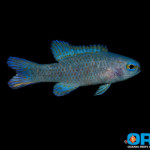
Captive Bred Randall’s Assessor available from ORA
ORA has released captive bred Randall’s Assessor to all of its resellers. The fish is now being shipped around the world and you might see the first fish in your local store later this week or early next week. The Randall’s Assessor is rather rare in the aquarium hobby and as such you can most likely expect these fish to be a bit more expensive than some other captive bred fish. Do not be surprised if these fish comes with a price tag of above USD 100.
ORA first acquired their Randall’s Assessor last year. The broad stock was acquired from Blue Harbor in Japan. ORA had almost immediate success with this species, something that shouldn’t be a surprise considering that ORA now have bred all known and kept assessor species. In December 2012 ORA announced that they had the first batch of fry going through metamorphosis and that they were about to change the focus of the breeding effort to ramp up numbers so that they could be released to the public. Something that they now, a mere 10 months later has been able to achieve. This feat was made a little bit easier by the fact that the Randall’s Assessor is a nest spawning species that produce large nests and quickly reach sexual maturity.
Randall’s Assessor is an excellent addition to most aquariums due to its relatively small size and its calm behavior.
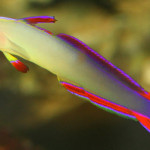
Exquisite firefish, Nemateleotris exquisita
A new species of firefish, the Exquisite firefish, Nemateleotris exquisita has been scientifically described. The new species is very similar to the purple firefish but with an to me even more intense coloring. It also grows larger that the purple firefish. The body of the Exquisite firefish is lined with purple and red. There is however no description that could make this little gem justice so it is better that you just take a look at the picture above. I welcome everyone to try to formulate a good description that captures the essence of this stunning fish and post it as a comment below.
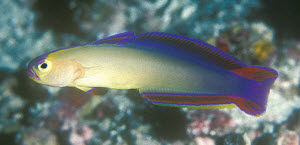
Hybrid between the exquisite and the purple firefish
The new species hails from Mauritius, Kwazulu-Natal,the Red Sea as well as the the Thai coast of the Andaman Sea, and the Andaman Islands. It was described from specimens that had been collected in rather deep water around Mauritius, Kwazulu-Natal and in the Red Sea. The new species is known to breed and spawn hybrids with the purple firefix. This is a relatively common occurrence in the wild. (in comparison to other hybrids).
This species might already have been imported as Purple firefish but there is no way to know for sure at this time. The fish that is being imported as purple firefish will in the future most likely be divided into a number of different species.
To me it seems certain that we soon will see this species in the trade imported from the Maldives and perhaps also the Red Sea. It will likely be a little bit more expensive than the purple firefish due to its initial rarity and due to them being harder to catch than the purple firefish since they live in deeper water.
Keeping the Exquisite firefish in aquarium
Basic info
- Family: Gobiidae
- Minimum Tank Size: 20 gallons
- Care Level: Easy
- Temperament: Peaceful
- Reef Compatible: Yes
- Temperature: 72-78° F
- dKH: 8-12
- pH: 8.1-8.4
- sg: 1.020-1.025
The Exquisite firefish, Nemateleotris exquisita can be kept in the aquarium in much the same way as the purple firefish and if you successfully kept purple firefish you should not have any problems keeping the Exquisite firefish. There are however a couple of things to remember. The Exquisite firefish grows larger than the purple firefish and will therefor need a larger tank. A 10 gallon tank could most likely work but we recommend giving it at least a 20 gallon tank so it has more space to roam around.
It is important that you provide the Exquisite firefish with enough suitable sized caves that they can retreat to when they feel threatened. It is a reef safe species and can be kept with mos other calm reef species. Avoid keeping them with very aggressive species.
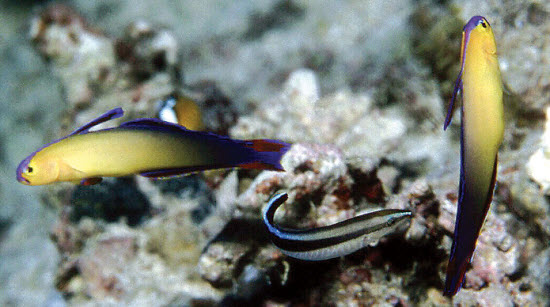
In the wild at 220 ft / 68 m deep
If you want to know more about this species i recommend that you the report that described the species:
Nemateleotris exquisita, a new microdesmid fish from the Indian Ocean

Tip of the Week # 3 – Waterchanges
Don’t underestimate the importance of waterchanges!
In may low demanding and more basic set-ups, weekly water changes in the range of 5% to 20% would be all that you would need to replace the consumed elements from your water as well as helping to control excesses nutrient build-up. Many people do not realize that water changes when cycling your tank can also be very important and beneficial with harming or prolonging most commonly used cycling processes.
Waterchanges when cycling a marine aquarium with at least some live rock my actually help you out down the road. This is very different from a typical fishless cycle in a freshwater aquarium. Within the nitrogen cycle that develops in your marine aquarium, you will develop bacteria that eats the proteins and turns them into ammonia. This type of bacteria will reproduce a lot faster than the ammonia eating bacteria, so the ammonia produced can actually grow to toxic enough levels that will prolong the cycle. Typically this point occurs somewhere around 1 to 2 ppm of ammonia. This is why you have to do water changes if the ammonia reaches levels of 1 to 2 ppm or higher. The water change will help reduce the ammonia and other decaying particles from the tank helping the cycle complete faster and the water parameters become balanced quicker. Although there is some beneficial bacteria free floating in the water, it will be in such small amounts that water changes will not remove enough of them to be impactful in any way. This is why water changes when cycling with at least some live rock will help the cycle move along faster, not slow it down one bit. This will also help to limit the potential for higher levels of nitrates before the nitrate eating bacteria has a change to develop which will reduce the risk of nitrate build up within your rock.
And the below are some more interesting article that I found and thought I would share
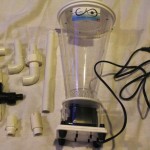
CAD Lights Biopellet Reactor Equipement Review
For the past few years I have been using biopellets in a traditional or common media reactor. While this traditional design has been a highly effective design for media such as phosphate removers or carbon, I have found it not to work that well when with the biopellets on the market today. In my experience, it has been challenging to maintain the biopellets properly suspended in the reactor with the correct amount of flow. Clumping and uneven biopellet movement due to uneven water flow through the reactor has always remained a challenge.
I had been looking for an alternative to the common media reactors. In early 2012, Cad Lights Aquariums launch the Conic Media Reactor (CAD Lights Biopellet Reactor), which is a new reactor designed specifically for use with biopellets. The model I purchased is the BR-1
The below information is taken directly from the manufacture’s website
http://www.cadlights.com/index.php?main_page=product_info&cPath=51&products_id=213
“Specifications
* NEW 3-way recirculating valve gives you the control of the Bio-reactor at your hands.
* Total space useage: 6″ x 6″ x 12″ (16″ high with plumbing)
* Capacity of 50G up to 350G
* Can hold up to 750ML of Bio-pellets.
* Compatibility: works best with Tapered edge or other non-perfectly round bio-pellets.
* Built in pump
* 11.5W of energy use.
* Standard 1/2″ SCH40 PVC can easily be extended to reach into other chambers for installation.
* Total silence.”
Base on my own experience, this design has two main features that make it different
1 The media chamber is an inverted triangle shape.
2 The pump is placed inside the reactor beneath the reactor chamber.
These two new features help to focus the right amount of flow even through the pellets keeping all pellets consistently moving within the reactor chamber while keeping the foot print of the reactor smaller. Based on a few weeks of use, I am extremely happy with the performance of this reactor. In my opinion, this design makes the Cad Lights Conic Media Reactor among the better reactors on the market right now.
I was also extremely impresses with the manufacture. The reactor cam very well packaged and they even went the extra mile to pre-wrap the threaded connection on the one fitting you have to screw onto the top of the with a good quality thread tap. This shows the company cares about quality.
The only drawback that I can see with this reactor design is that it does require more height clearance than a traditional media reactor which could be a limiting factor when using in an aquarium stand on aquariums smaller than 150 gallons.
Although I feel this reactor doesn’t work as well as the manufacture claims, it still is a very good quality reactor and I would recommended it to anyone who has the required room in their sump for it.
